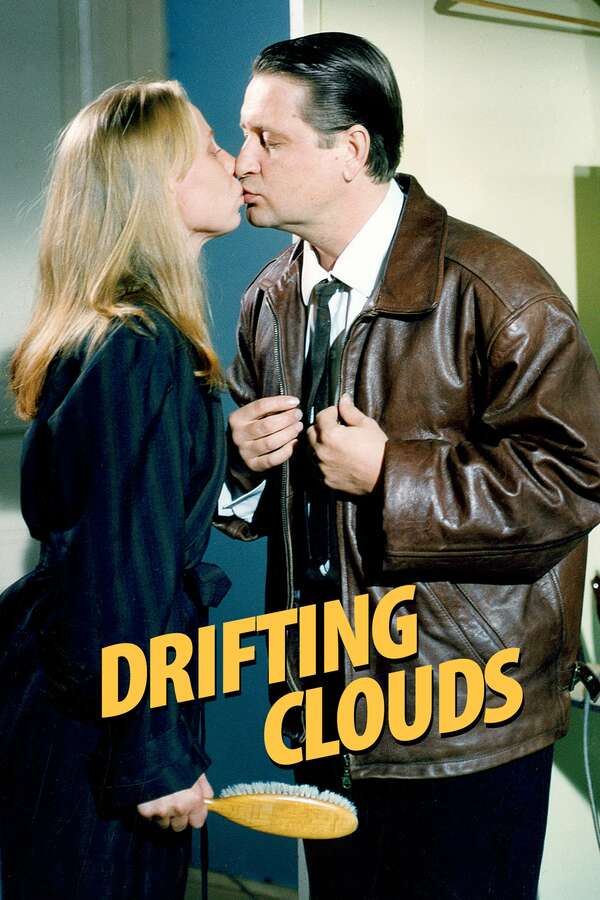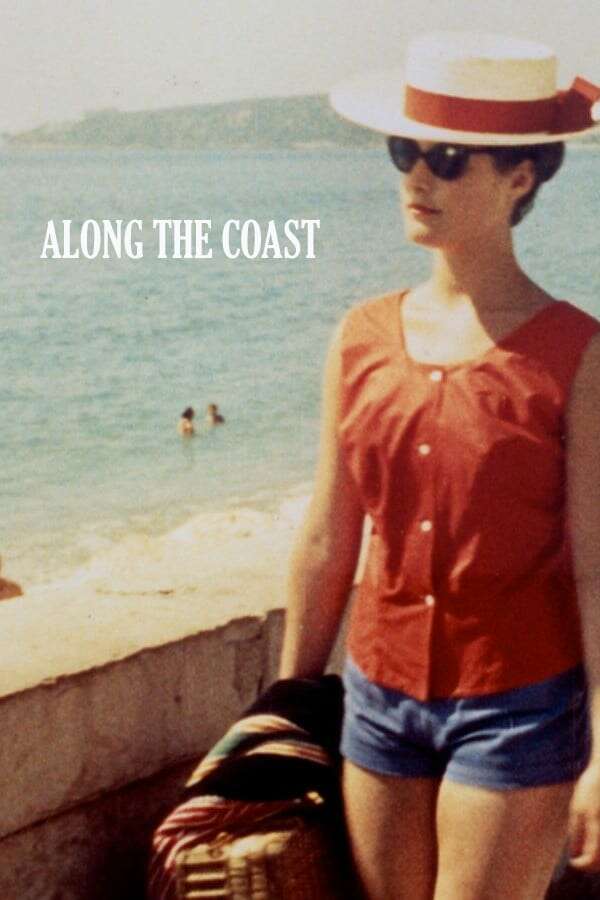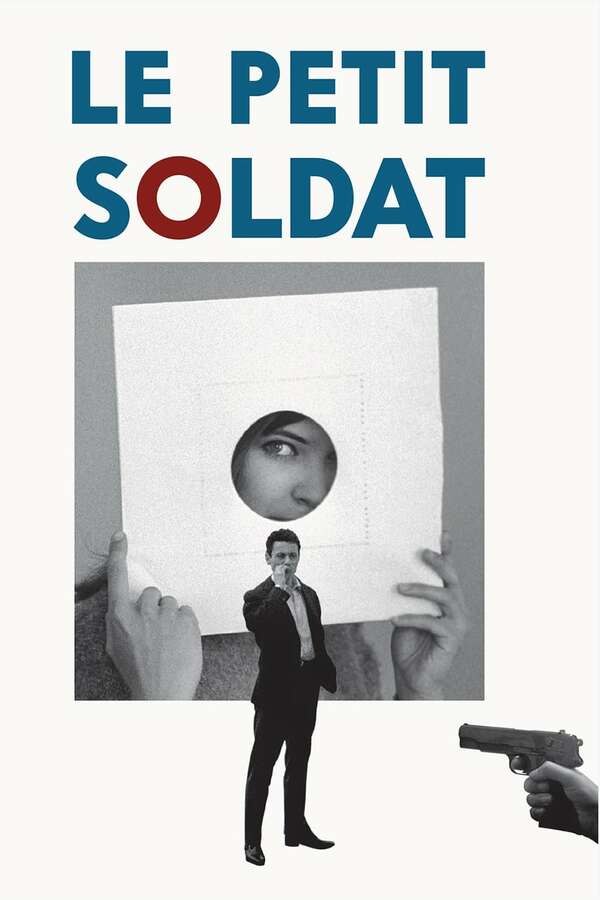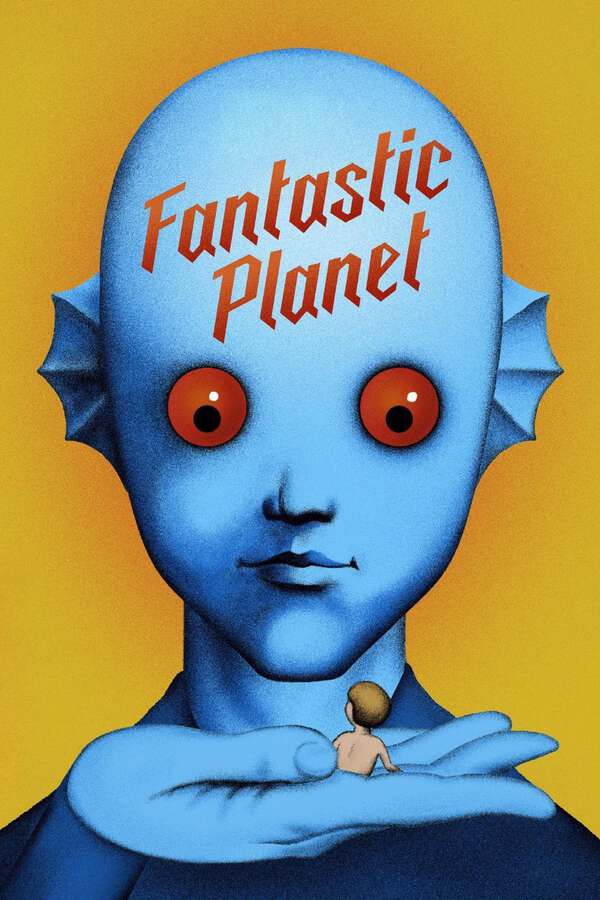4v291o
Watched on Friday June 6, 2025.
]]>
Watched on Thursday June 5, 2025.
]]>
Watched on Thursday June 5, 2025.
]]>
Watched on Sunday June 1, 2025.
]]>
Watched on Saturday May 31, 2025.
]]>
Watched on Thursday May 29, 2025.
]]>
"We know - we who make these sad and ugly films, these desperate films where reason doesn't always possess the loudest voice - that hunger will not be cured by the planning of the cabinet and that the strips of Technicolor will not hide but amplify its tumours."
Glauber Rocha
]]>
Watched on Wednesday May 28, 2025.
]]>
Watched on Sunday May 25, 2025.
]]>
Watched on Saturday May 24, 2025.
]]>
Watched on Wednesday May 21, 2025.
]]>
Watched on Wednesday May 21, 2025.
]]>
Watched on Tuesday May 20, 2025.
]]>
Watched on Sunday May 18, 2025.
]]>
Watched on Sunday May 18, 2025.
]]>
Watched on Thursday May 15, 2025.
]]>
Watched on Wednesday May 14, 2025.
]]>
Watched on Wednesday May 14, 2025.
]]>
Watched on Tuesday May 13, 2025.
]]>
Watched on Sunday May 11, 2025.
]]>
Watched on Friday May 9, 2025.
]]>
Watched on Wednesday May 7, 2025.
]]>
Watched on Wednesday May 7, 2025.
]]>
Watched on Tuesday May 6, 2025.
]]>
Watched on Sunday May 4, 2025.
]]>
A man wrote to Alfred Hitchcock: “Sir, After seeing ‘Diabolique,’ my daughter was afraid to take a bath. Now she has seen your ‘Psycho’ and is afraid to take a shower. What should I do with her?”
Hitchcock replied: “Send her to the dry cleaners.”
From Roger Ebert's review
]]>
Watched on Thursday May 1, 2025.
]]>
Watched on Wednesday April 30, 2025.
]]>
Watched on Monday April 28, 2025.
]]>
Watched on Saturday April 26, 2025.
]]>
Watched on Saturday April 26, 2025.
]]>
Watched on Friday April 25, 2025.
]]>
Watched on Thursday April 24, 2025.
]]>
Watched on Tuesday April 22, 2025.
]]>
Watched on Tuesday April 22, 2025.
]]>
Watched on Monday April 21, 2025.
]]>
Watched on Sunday April 20, 2025.
]]>
Watched on Saturday April 19, 2025.
]]>
Watched on Thursday April 17, 2025.
]]>
Watched on Wednesday April 16, 2025.
]]>
Watched on Saturday April 12, 2025.
]]>
Watched on Friday April 11, 2025.
]]>
Watched on Friday April 11, 2025.
]]>
Watched on Wednesday April 9, 2025.
]]>
Watched on Wednesday April 9, 2025.
]]>
Watched on Tuesday April 8, 2025.
]]>
Watched on Sunday April 6, 2025.
]]>
Watched on Saturday April 5, 2025.
]]>
Watched on Friday April 4, 2025.
]]>
Watched on Wednesday April 2, 2025.
]]>- Notturno
- Woody Allen: A Documentary
- The Blues
- My Voyage to Italy
- Five Came Back
- Tie Xi Qu: West of the Tracks
- Man with a Movie Camera
- Shoah
- Crip Camp: A Disability Revolution
- Filming Othello
...plus 177 more. View the full list on Letterboxd.
]]>“La première génération de « cinéastes cinéphiles dans l’histoire du cinéma »”. – André Bazin
- Zazie dans le Métro
- La Jetée
- The Umbrellas of Cherbourg
- Shoot the Piano Player
- Cléo from 5 to 7
- Hiroshima Mon Amour
- Band of Outsiders
- The 400 Blows
- Breathless
- Muriel, or the Time of Return
...plus 130 more. View the full list on Letterboxd.
]]>- The Hand
- A Midsummer's Night Dream
- The Fabulous Baron Munchausen
- The Fabulous World of Jules Verne
- Journey to the Beginning of Time
- Inspiration
- Poor Pierrot
- The Musician Monkey
- Fantasmagorie
- The Waiter's Dream
...plus 65 more. View the full list on Letterboxd.
]]>"Unlike all the other art forms, film is able to seize and render the age of time, to stop it, almost to possess it in infinity. I'd say that film is the sculpting of time."
Andrej Tarkovskij
The list is not strictly Slow Cinema, but I decided to include all those films that were its precursors and that, in my opinion, are interesting to watch.
- Goodbye, Dragon Inn
- Rebels of the Neon God
- Vive L'Amour
- What Time Is It There?
- The Wayward Cloud
- Millennium Mambo
- A City of Sadness
- Blow-Up
- La Notte
- L'Avventura
...plus 97 more. View the full list on Letterboxd.
]]>- Empire of the Sun
- Cross of Iron
- The Tree of Wooden Clogs
- Ran
- The Searchers
- A Fistful of Dollars
- Paths of Glory
- Rome, Open City
- Ivan's Childhood
- 2001: A Space Odyssey
...plus 48 more. View the full list on Letterboxd.
]]>- Gaslight
- Rear Window
- Diabolique
- The Bad Seed
- What Ever Happened to Baby Jane?
- Shock Corridor
- Repulsion
- Sisters
- The Conversation
- Manhunter
...plus 21 more. View the full list on Letterboxd.
]]>- North by Northwest
- Rear Window
- Marnie
- Vertigo
- Psycho
- The Birds
- Dial M for Murder
- The Wrong Man
- To Catch a Thief
- I Confess
...plus 6 more. View the full list on Letterboxd.
]]>-APPUNTI-
I Film di Alberto Lattuada sono del periodo del Neorealismo però sono più improntati allo spettacolo.
I Film di Pietro Germi erano Neorealisti ma legati ad un concetto di spettacolo cinematografico che in larga misura poteva identificarsi con quello hollywoodiano.
Giuseppe De Santis sì inserì nel movimento neorealistico con una sorta di programma artistico-culturale ben preciso.
- I Vitelloni
- Obsession
- , Year Zero
- Miracle in Milan
- Bellissima
- Umberto D.
- Europe '51
- Shoeshine
- Bitter Rice
- Stromboli
...plus 11 more. View the full list on Letterboxd.
]]>I film sono da prendere a gruppo dello stesso regista:
Best Of Bergman
Hitchcock Collection
Il Signore Degli Anelli
Eric Rohmer Collection
- The Seventh Seal
- Wild Strawberries
- Persona
- Scenes from a Marriage
- Sabotage
- Shadow of a Doubt
- Rope
- Rear Window
- The Man Who Knew Too Much
- The Trouble with Harry
...plus 16 more. View the full list on Letterboxd.
]]>Per gli amici
- The Conjugal Bed
- The Fiancés
- Hands over the City
- La Ricotta
- Black Sabbath
- Winter Light
- The Silence
- The Servant
- The Leopard
- Normal Love
...plus 17 more. View the full list on Letterboxd.
]]>During the 1950s, the Hollywood production system had to confront two closely related phenomena: the advent of television and the drastic decline in movie theater attendance. The studios responded to this situation by trying to make cinema the greatest show on earth (bigger than life, as they liked to say at the time), especially through the introduction of color and CinemaScope, which enhanced the imaginative potential of the big screen (at the expense of the much more limited small television screen). Moreover, American cinema began to realize the progressive emergence of a new audience, the youth, to whom it started to cater with films largely designed for the new generations, increasingly restless, speaking to them with new icons like James Dean, Marlon Brando, and Elvis Presley, who were demographically and existentially closer to them. Concurrently, independent productions began to become more active with the creation of B-movies with strong and outrageous subjects - sex, violence, music, horror, science fiction - particularly suitable for a youthful, if not adolescent, audience. This process was also favored by the abandonment of the Production Code, inspired by the rules of the Hays Code, which was replaced by a milder rating system that divided films into different categories: from those for all ages to those restricted to an adult audience.
NEW HOLLYWOOD:
The 1960s marked the birth of New Hollywood, a period of significant transformation in American society. This era was shaped by the optimism linked to President John Kennedy's reformist agenda and the tumultuous Vietnam War (1965-1972). A diverse movement of young people, intellectuals, and minorities emerged, advocating for various causes: from opposing the Southeast Asian conflict and military draft to challenging capitalist consumerism and seeking greater sexual freedom. The civil rights movement, led by Martin Luther King Jr. and, more radically, by Malcolm X, also gained momentum, alongside university protests and the broader counterculture movement. This counterculture was characterized by the Beat generation's literature (Allen Ginsberg, Jack Kerouac), politically charged country and rock music (Woody Guthrie, Bob Dylan, Joan Baez), and the hippie movement's communal living, family rejection, and soft drug use, encapsulated by the "Peace and love" slogan.
Cinema played a dual role during this time, actively shaping and reflecting these societal shifts. This was evident in the radical, experimental New American Cinema, or underground cinema, and the New Hollywood. The latter signified a comprehensive overhaul of American filmmaking, from production to content and style, throughout the '60s and '70s. Films became a medium for social and political commentary, intellectual challenge, and ideological critique.
New Hollywood's identity was largely forged by a handful of influential films released between 1967 and 1969, which enjoyed massive box office success. Notable examples include Mike Nichols' "The Graduate" (1967), Arthur Penn's "Bonnie and Clyde" (1967), John Schlesinger's "Midnight Cowboy" (1969), and Dennis Hopper's "Easy Rider" (1969).
Other important movements of the period include: militant cinema, underground cinema, and the new avant-garde cinema.
MILITANT CINEMA:
In the late 1960s, militant cinema emerged as an expression of youth protest and the American New Left. This movement, which also developed in Europe, was characterized by deep political and ideological commitment. The Newsreels collectives, established in New York and San Francisco at the beginning of 1968, became known for their documentary production, which, despite limited resources, tackled issues such as racism, corruption, pacifism, and social matters with a direct and uncompromising approach.
Robert Kramer, a key figure in this movement, founded The Newsreel in 1967 and stood out with works like "The Edge" (1967), depicting the struggle of young Americans against the Vietnam War. Later, with "Ice" (1969) and "Milestones" (1975), Kramer continued to explore political and social themes, blending fiction and documentary. Eventually, he moved to Paris where he continued his career with films like "Guns" (1980), following the lives of post-'68 militants. His work represents a benchmark for the militant and avant-garde cinema of the time.
NEW AMERICAN CINEMA:
The underground cinema, which emerged in cultural circles in San Francisco and New York during the 1960s, is characterized by its experimental nature and the use of limited resources. This movement, rooted in the historical avant-garde and the Dadaist and Surrealist movements of the 1920s, influenced American cinema through the 1940s. Films such as "Manhattan" (1921) by Sheeler and Strand and "Meshes of the Afternoon" (1943) by Maya Deren are examples of experimental works that anticipated and broke with conventions, influencing subsequent cinema. During the 1950s and 60s, underground cinema was also shaped by the political and cultural climate, with movements like the Beat generation and Pop Art. "Pull My Daisy" (1959), created by Leslie and Frank with contributions from Kerouac, Ginsberg, and others, is an example of the fusion of different artistic experiences and marked a key point in the history of underground cinema.
Films such as "Shadows" (1959) by Cassavetes and "Primary" (1961) by Leacock and Maysles were recognized for their innovative and politically engaged approach, reflecting a different and more politicized cultural tradition compared to the poets and directors of the Beat generation. These films and others contributed to the formation of the American documentary movement, influencing filmmakers like Drew, Pennebaker, and the Maysles brothers, as well as works like "The Little Fugitive" (1953) by Engel, which explored human subjectivity in new and influential ways.
The American underground cinema represents a convergence and interference of various elements of American protest, merging the European Dadaist and Surrealist revolts with the reformist and progressive American culture of the 1930s. This movement developed alongside political commitment and social criticism, inspired by a holistic view of humanity and society and the hope of changing the world. However, the hopes raised by the Kennedy istration were short-lived, leading to disillusionment due to events such as the failed invasion of Cuba and the onset of the Vietnam War, resulting in a more pronounced and nihilistic sense of despair. The underground cinema often rejected formal conventions, favoring the expression of inner experience and individual liberation from the constraints of a repressive society. These predominantly autobiographical films explore human subjectivity and phenomenological reality, often transcending traditional "committed" cinema.
Among the significant authors of the 1940s, Maya Deren created works like "Meshes of the Afternoon," which defined the new American avant-garde cinema with their visionary and surreal dimension. Kenneth Anger, with films such as "Fireworks" and "Scorpio Rising," explored themes of lost innocence, homosexual love, and occultism, deeply influencing the underground culture.
Anger is also known for his books "Hollywood Babylon" (1960, 1984), which expose scandals of the film capital. These works contributed to forming an extremely varied and complex film production, intended for an elite audience and often limited to specialized theaters. The underground cinema embraced diverse artistic experiences, from the rejection of traditional narrative to the direct and unfiltered representation of sexuality, reflecting the richness and diversity of this artistic movement.
THE " MOVIE BRATS " AND THE RETURN OF HOLLYWOOD:
In the 1970s, Hollywood cinema experienced a significant revival, ed by the record-breaking box office of films that, while maintaining a connection with the social criticism and disillusionment typical of the early works of New Hollywood, managed to transform it into a grand spectacle. These films benefited from large productions and technological development, particularly in special effects, marking the triumph of the imagination and the return to the blockbuster policy. To minimize the risks of failure, there was a move towards stricter control of the authors' work, some of whom reacted by becoming producers themselves. However, facing large budgets, these directors had to worry about the economic return of their films, thinking more like producers than authors. The directors of these films, known as "movie brats" including Coppola, Spielberg, Lucas, along with others like Scorsese, De Palma, Cimino, and Milius, were mostly film school graduates, a novelty in the history of Hollywood. They developed a great ion for cinema and an obsession with the seventh art, similar to that of the directors of the French Nouvelle Vague. Their debuts were an integral part of the renewal proposed by the initial New Hollywood, both in of content and authorial style. These directors were the ones to lead the Hollywood industry, after a period of crisis, towards a new type of cinema characterized by spectacle, imagination, entertainment, and wonder, marking a gradual transition to postmodern forms. This movement marked an era and profoundly influenced the way of making cinema, leading to an evolution that continues to influence today's productions.
Sourced from: Manuale di storia del cinema di Gianni Rondolino e Dario Tomasi.
- The Killers
- Madigan
- Dirty Harry
- The Beguiled
- Charley Varrick
- The Shootist
- Escape from Alcatraz
- Breakfast at Tiffany's
- Experiment in Terror
- Days of Wine and Roses
...plus 122 more. View the full list on Letterboxd.
]]>"The **20th Congress of the Communist Party of the Soviet Union**, held in 1956, was a pivotal moment marked by the famous **'Khrushchev Report'**. This report initiated the process of de-Stalinization and the subsequent 'Thaw,' signaling the start of an era filled with hope and illusions following the bleak years of the Cold War and Stalin's stringent policies (Stalin died in 1953). These developments were part of a profound transformation that touched various aspects of social, political, and cultural life, not only within the Soviet Union but also across the socialist countries of Eastern Europe. This new atmosphere nurtured the emergence of a new cinema that sought to move beyond the models and rhetoric of socialist realism."
(Grigoriy Chukhray, Mikhail Kalatozov, Mikhail Romm)
"In Poland, this renewal made itself known in a violent and forceful manner in the mid-1950s, partly due to the activities of the Łódź Film School. The works of certain filmmakers, particularly Andrzej Munk, Andrzej Wajda, Wojciech Has, and Jerzy Kawalerowicz, presented films that, while still tentative, were fraught with challenging issues, proposing a new engagement with the contemporary reality."
( Andrzej Munk, Andrzej Wajda, Krzysztof Zanussi, Jerzy Skolimowski, Roman Polanski)
Czechoslovakia ( Nova Vlná): Jan Němec,
Jiří Menzel, Vera Chytilová, Miloš Forman.
Hungary: István Gaál, István Szabó, Péter Bacsó, Miklós Jancsó.
Sourced from: Manuale di storia del cinema di Gianni Rondolino e Dario Tomasi.
- The Forty-First
- Ballad of a Soldier
- Clear Skies
- The Cranes Are Flying
- Nine Days of One Year
- Man on the Tracks
- Eroica
- enger
- Kanal
- Ashes and Diamonds
...plus 36 more. View the full list on Letterboxd.
]]>Nel cinema di questi periodo ci sono tre tendenze:
In primo luogo c'è l'affermarsi di un cinema d'autore che privilegia un discorso sull'uomo e la sua dimesione esistenziale ( Antonioni e Fellini)
La seconda tendenza accoglie film in cui il carattere esistenziale si mescola con istanze politiche e il cui stile si richiama più espicitsmete a quello della Nouvelle Vague( Bertolucci e Bellochio)
Il terzo gruppo la componente politica prende il sopravvento ( Rosi e per certi aspetti Petri)
A fianco di quest'ambito autoriale c'è il cinema di genere, dominato dalla commedia all'italiana ( Risi, Monicelli, comencini e Scola)
Oltre alla commedia vanno aggiunti il « western all'italiana» e il Cinema thriller ( Sergio Leone e Dario Argento)
Fonte: Manuale di storia del cinema di Gianni Rondolino e Dario Tomasi.
- Rocco and His Brothers
- La Dolce Vita
- La Commare Secca
- Before the Revolution
- Partner
- The Spider's Stratagem
- The Conformist
- Last Tango in Paris
- 1900
- Luna
...plus 105 more. View the full list on Letterboxd.
]]>- The Rules of the Game
- The Wizard of Oz
- Gone with the Wind
- Drums Along the Mohawk
- Goodbye, Mr. Chips
- Of Mice and Men
- The Roaring Twenties
- Stagecoach
- Mr. Smith Goes to Washington
- The Story of the Last Chrysanthemum
...plus 3 more. View the full list on Letterboxd.
]]>